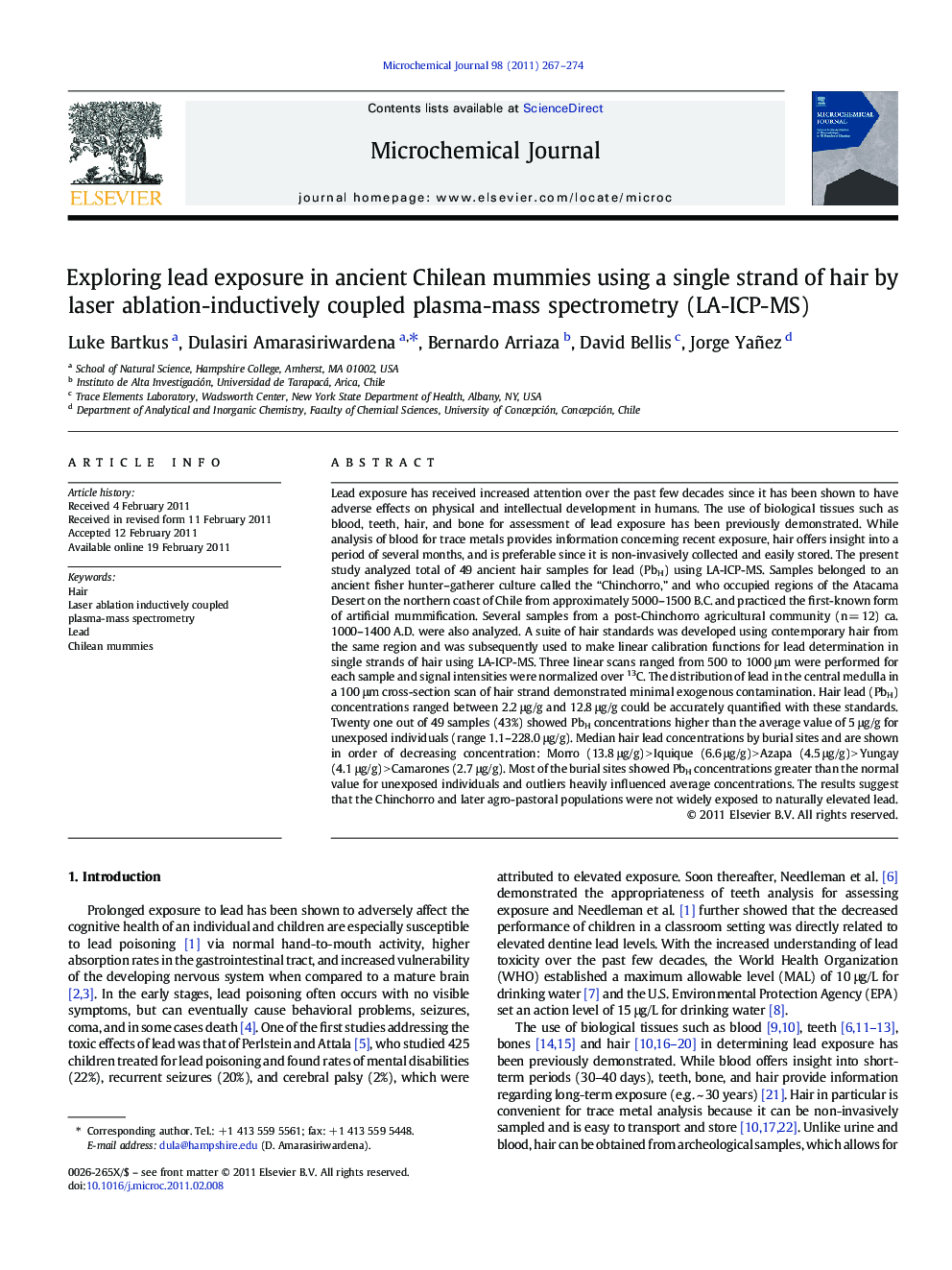| Article ID | Journal | Published Year | Pages | File Type |
|---|---|---|---|---|
| 1228036 | Microchemical Journal | 2011 | 8 Pages |
Lead exposure has received increased attention over the past few decades since it has been shown to have adverse effects on physical and intellectual development in humans. The use of biological tissues such as blood, teeth, hair, and bone for assessment of lead exposure has been previously demonstrated. While analysis of blood for trace metals provides information concerning recent exposure, hair offers insight into a period of several months, and is preferable since it is non-invasively collected and easily stored. The present study analyzed total of 49 ancient hair samples for lead (PbH) using LA-ICP-MS. Samples belonged to an ancient fisher hunter–gatherer culture called the “Chinchorro,” and who occupied regions of the Atacama Desert on the northern coast of Chile from approximately 5000–1500 B.C. and practiced the first-known form of artificial mummification. Several samples from a post-Chinchorro agricultural community (n = 12) ca. 1000–1400 A.D. were also analyzed. A suite of hair standards was developed using contemporary hair from the same region and was subsequently used to make linear calibration functions for lead determination in single strands of hair using LA-ICP-MS. Three linear scans ranged from 500 to 1000 μm were performed for each sample and signal intensities were normalized over 13C. The distribution of lead in the central medulla in a 100 μm cross-section scan of hair strand demonstrated minimal exogenous contamination. Hair lead (PbH) concentrations ranged between 2.2 μg/g and 12.8 μg/g could be accurately quantified with these standards. Twenty one out of 49 samples (43%) showed PbH concentrations higher than the average value of 5 μg/g for unexposed individuals (range 1.1–228.0 μg/g). Median hair lead concentrations by burial sites and are shown in order of decreasing concentration: Morro (13.8 μg/g) > Iquique (6.6 μg/g) > Azapa (4.5 μg/g) > Yungay (4.1 μg/g) > Camarones (2.7 μg/g). Most of the burial sites showed PbH concentrations greater than the normal value for unexposed individuals and outliers heavily influenced average concentrations. The results suggest that the Chinchorro and later agro-pastoral populations were not widely exposed to naturally elevated lead.
